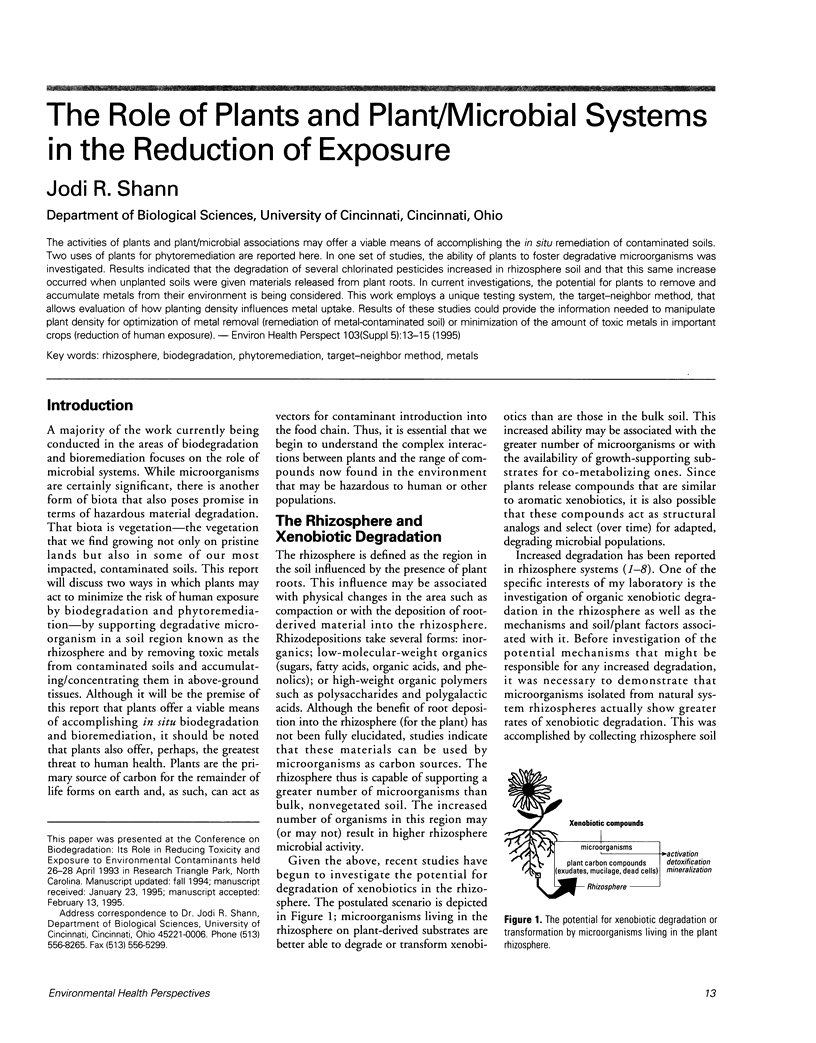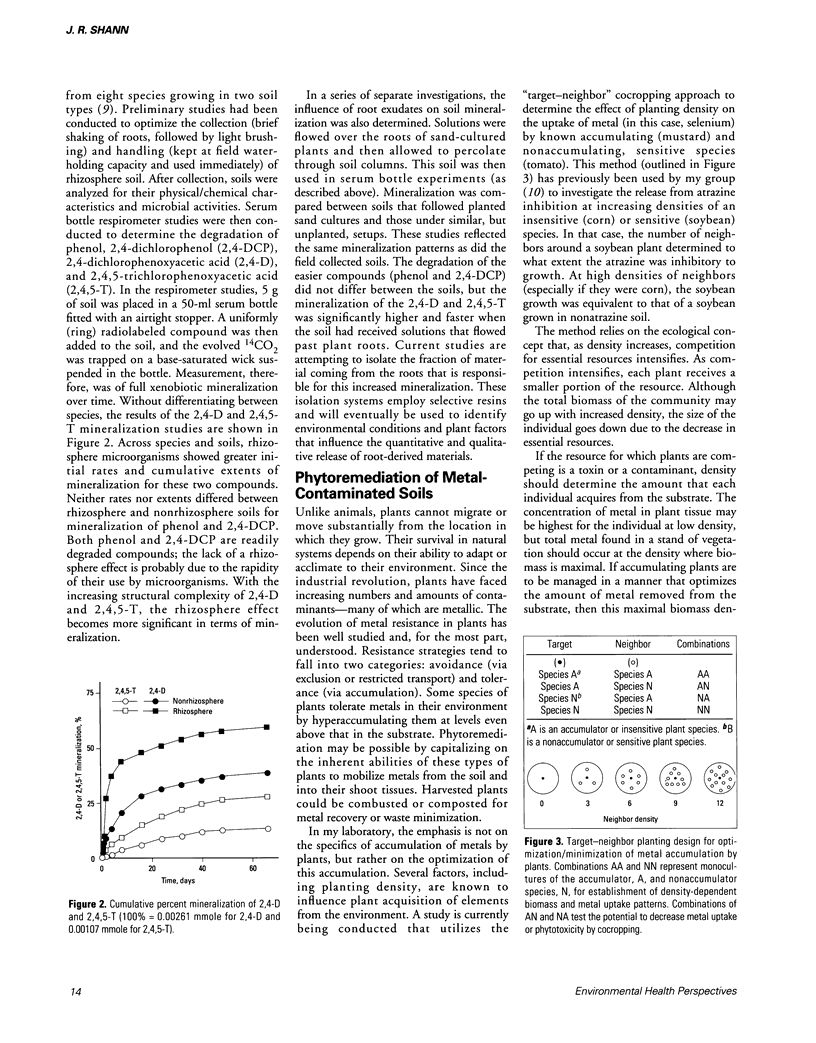Abstract
The activities of plants and plant/microbial associations may offer a viable means of accomplishing the in situ remediation of contaminated soils. Two uses of plants for phytoremediation are reported here. In one set of studies, the ability of plants to foster degradative microorganisms was investigated. Results indicated that the degradation of several chlorinated pesticides increased in rhizosphere soil and that this same increase occurred when unplanted soils were given materials released from plant roots. In current investigations, the potential for plants to remove and accumulate metals from their environment is being considered. This work employs a unique testing system, the target-neighbor method, that allows evaluation of how planting density influences metal uptake. Results of these studies could provide the information needed to manipulate plant density for optimization of metal removal (remediation of metal-contaminated soil) or minimization of the amount of toxic metals in important crops (reduction of human exposure).
Full text
PDF


Selected References
These references are in PubMed. This may not be the complete list of references from this article.
- Federle Thomas W., Schwab Burney S. Mineralization of Surfactants by Microbiota of Aquatic Plants. Appl Environ Microbiol. 1989 Aug;55(8):2092–2094. doi: 10.1128/aem.55.8.2092-2094.1989. [DOI] [PMC free article] [PubMed] [Google Scholar]
- Lappin H. M., Greaves M. P., Slater J. H. Degradation of the herbicide mecoprop [2-(2-methyl-4-chlorophenoxy)propionic Acid] by a synergistic microbial community. Appl Environ Microbiol. 1985 Feb;49(2):429–433. doi: 10.1128/aem.49.2.429-433.1985. [DOI] [PMC free article] [PubMed] [Google Scholar]
- Reddy B. R., Sethunathan N. Mineralization of parathion in the rice rhizosphere. Appl Environ Microbiol. 1983 Mar;45(3):826–829. doi: 10.1128/aem.45.3.826-829.1983. [DOI] [PMC free article] [PubMed] [Google Scholar]
- Walton B. T., Anderson T. A. Microbial degradation of trichloroethylene in the rhizosphere: potential application to biological remediation of waste sites. Appl Environ Microbiol. 1990 Apr;56(4):1012–1016. doi: 10.1128/aem.56.4.1012-1016.1990. [DOI] [PMC free article] [PubMed] [Google Scholar]


